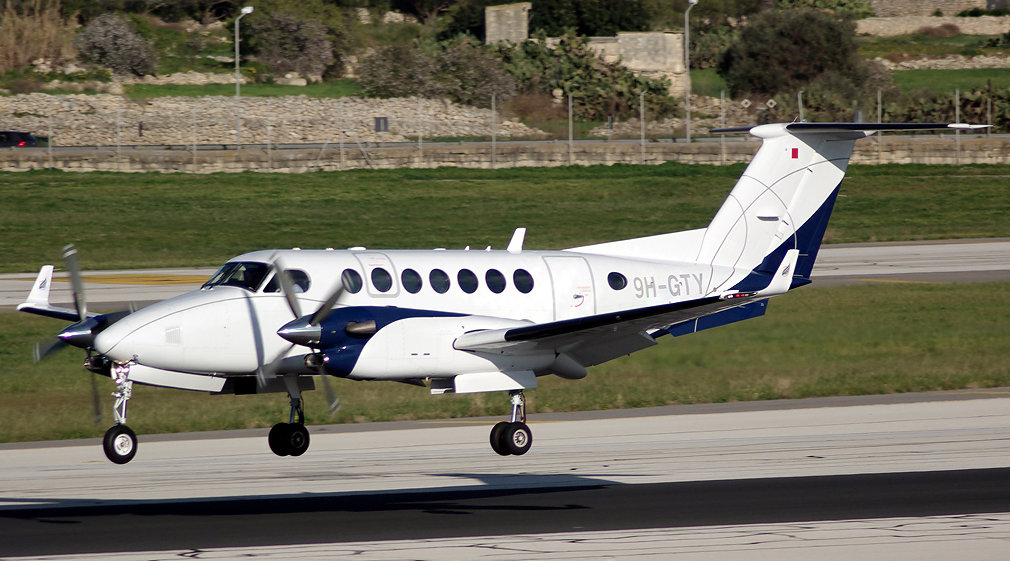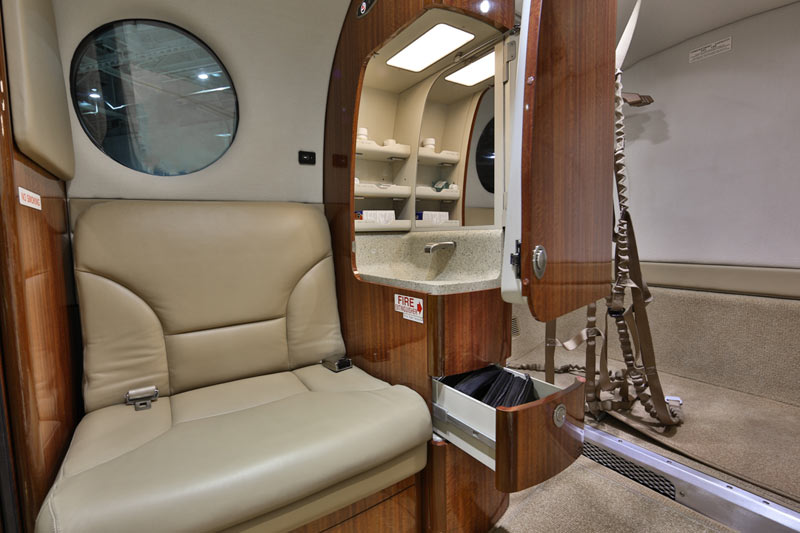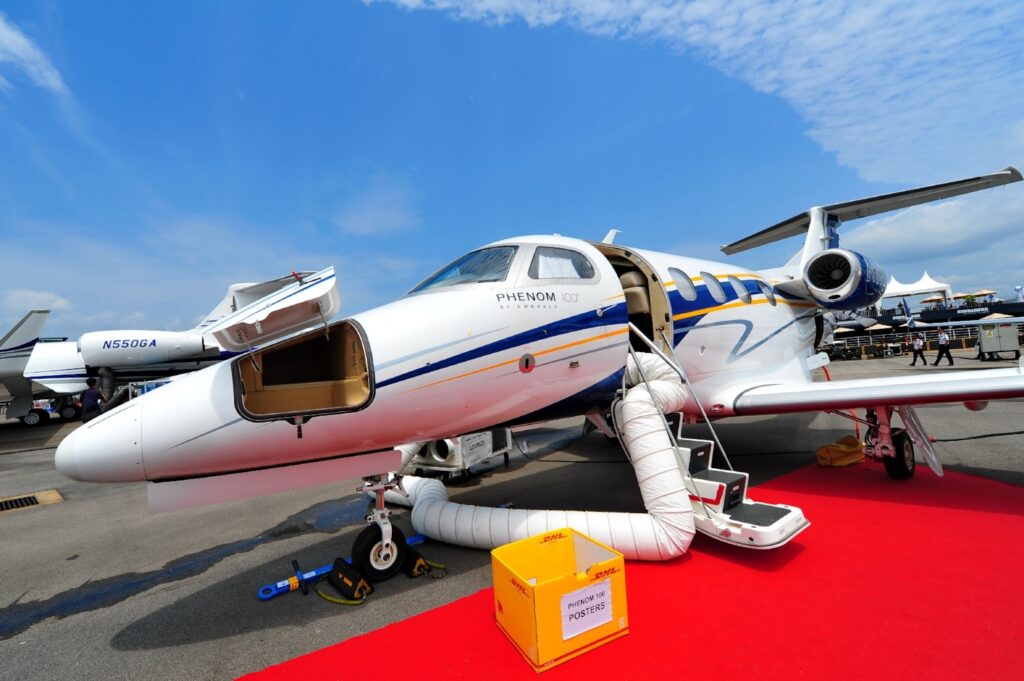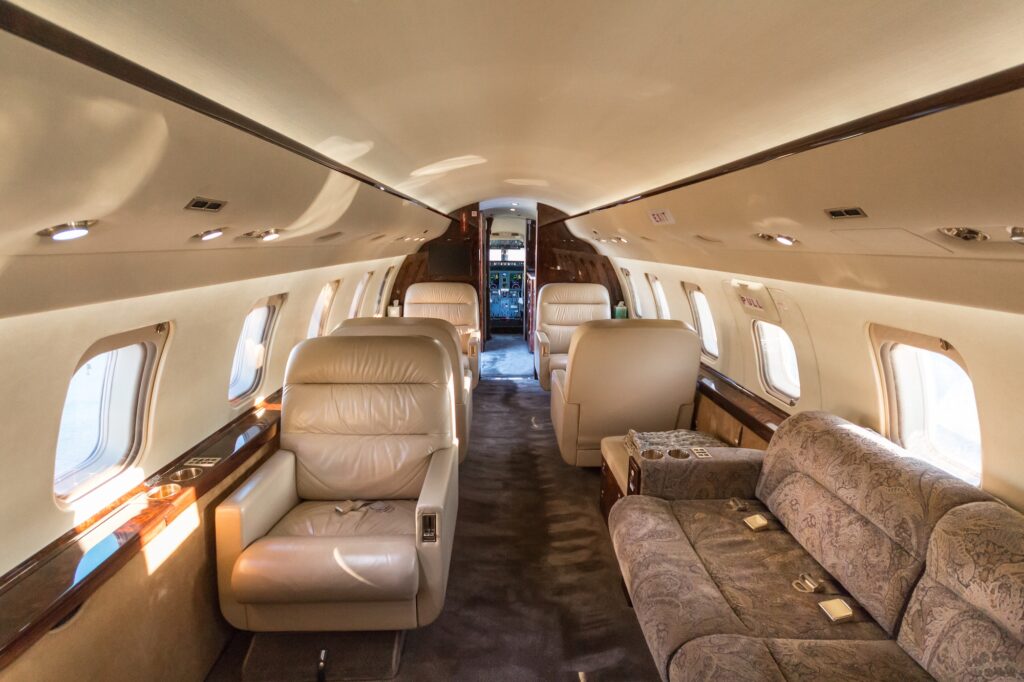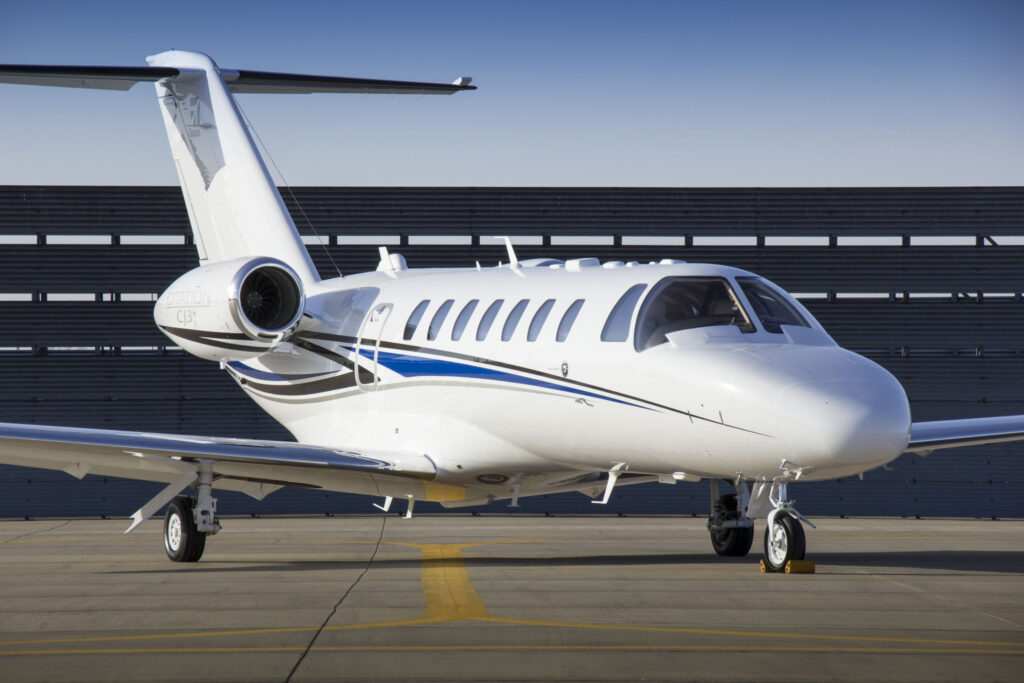King Air 300
Introduced to the market in 1984, what was known at the time as the “Super King Air 300,” the “Super” designation being dropped in 1996, was created as a successor to the 200 series. Based on the B200, the Model 300 has a modified airframe and more powerful engines with redesigned cowlings. It’s maximum takeoff weight was also increased. In order to be flown under certain European restrictions that wouldn’t allow an aircraft of its type to be certified with a MTOW greater than 12,500 lb, Beechcraft also created the Model 300LW with a lower MTOW right at 12,500 lb.
The King Air 300, equipped with two PT6A-60A engines, has a normal cruise speed of 315 knots, a range of 1,795 nautical miles, a climb rate of 2,844 feet per minute, and requires 3,851 feet of runway to takeoff and 3,156 to land.
King Air 350 (B300)
In 1988, Beechcraft began modifying the 300, stretching the fuselage by close to three feet, adding two cabin windows on each side, and adding winglets to create the Model B300, now known as the King Air 350. The King Air 350 was introduced in 1990 as the Super King Air 350. In addition to the changes to the fuselage, the 350 was given a higher MTOW of 15,000 lb. Beechcraft also created the King Air 350C, adding a cargo door to the original model, like they did with the 200 and B200. In 1998, Beechcraft implemented the UltraQuiet active noise canceling system as standard on all King Air 350s. In 2003, the 350 and 350C were upgraded to the Collins Pro Line 21 avionics suite. Additional variations of the 350 include the 350ER and 350CER, which were built with an increased MTOW and extra fuel capacity to increase range, while the CER has a cargo door, as well. Both the ER and CER also allow surveillance equipment to be installed. Beechcraft also created the 350i with cabin improvements that increase comfort and decrease the noise level. Those improvements include remote controls in armrests that control LED lights throughout the cabin, darken and lighten the windows, and control music and television, as well as the addition of USB ports, electrical outlets and fold-out tables. The 350C, 350ER, and 350CER all have “i” models, as well, in the 350iC, 350iER, and 350iCER.
The King Air 350, equipped with two PT6A-60A engines, has a normal cruise speed of 311 knots, a range of 1,550 nautical miles, a climb rate of 2,700 feet per minute, and requires 3,217 feet of runway to takeoff and 3,161 to land. The 350ER, equipped with the same engines, has the same cruise speed, but has a range of 2,257 nautical miles, a climb rate of 2,400 feet per minute, and requires 4,977 feet of runway to takeoff and 3,635 to land.
[ulp id=’ksrvpykbSKmvluGu’]

